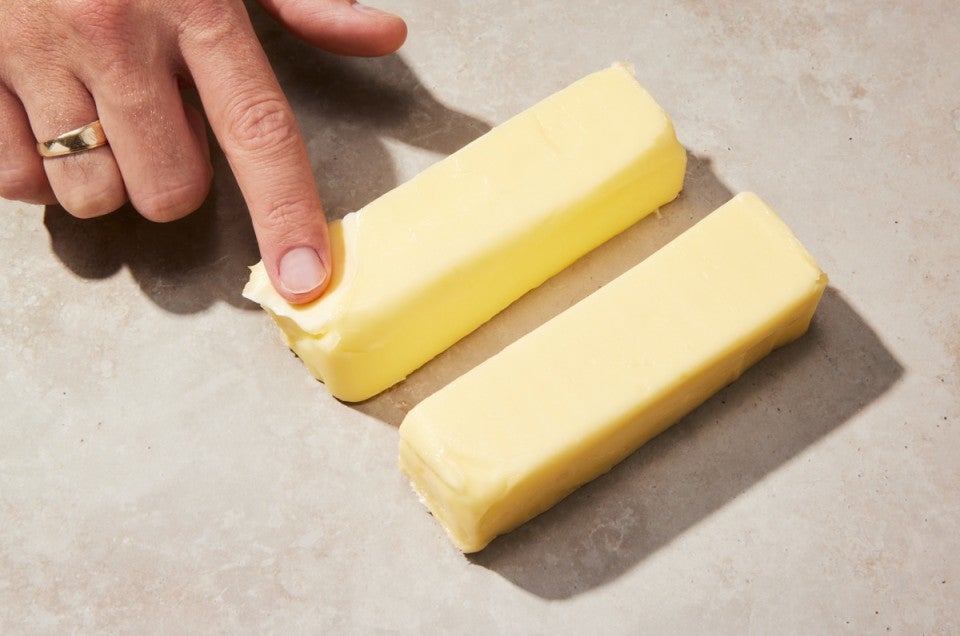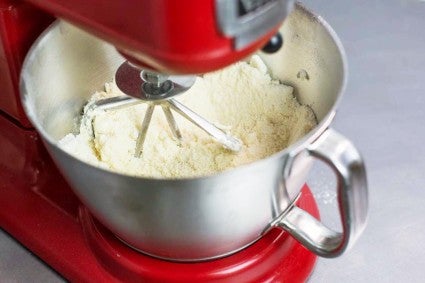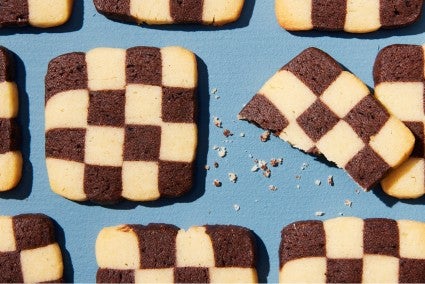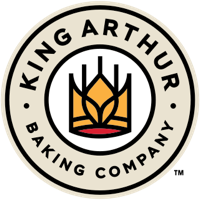The hottest cookies are made with cold butter
Why bakers are reaching for cold (not soft!) butter for their cookies


If you’ve ever baked a batch of cookies, then you’re probably familiar with the usual first step of the process: bringing a stick or two of butter to room temperature. Because of its soft texture, room temperature butter is easier to cream with sugar until light and fluffy, a step that aerates the dough and contributes to the final texture of your cookies.
“Creaming works because sugar is a crystal, which is sharp and jagged, so when you mix it with butter, it punctures [the butter] and leaves behind air pockets,” explains Trung Vu, a chef-instructor of Pastry & Baking Arts at the Institute of Culinary Education. But while this is the first step in thousands (millions?) of cookie recipes, a few pro bakers are challenging everything we know about this tried-and-true method by using cold butter in their cookie dough instead. This promises a recipe that's faster (no waiting for butter to warm!) but also results in cookies with a soft and chewy texture.
Nicole Rucker, an award-winning pastry chef and owner of Fat + Flour in Los Angeles, recently went viral for her cold butter cookie dough, which she outlines in her new cookbook Fat + Flour: The Art of a Simple Bake. Nicole relies on what she calls the CBM — or the cold butter method — to make her Classic Soft Chocolate Chip Cookies, Classic Chewy Sugar Cookies, Pumpkin Snickerdoodle Cookies, and more. “Cold fat is worked into the dry ingredients before introducing the wet ingredients,” Nicole writes in her book. Doing so, she says, saves time and eliminates the inevitable guessing game of what exactly creamed butter and sugar should look like.

“It was inspired by the vintage cake-baking techniques referred to as the ‘reverse creaming method’ and the ‘double-quick method’ of beating softened butter into the dry ingredients before introducing any liquid,” Nicole explains in her book. “I wondered why I wasn’t using cold butter in the same fashion to get the desired effect of larger broken-down pieces of butter amongst butter-coated flour. If this worked with cakes, could I use this method to bypass creaming butter for a cookie recipe? (Spoiler alert: YES.)”
The CBM method starts by combining the dry ingredients in the bowl of a stand mixer fitted with the paddle attachment. Then the cubed cold butter is added and the mixture is beaten until the butter breaks down and the dough resembles coarse sand, similar to the reverse creaming method cited by Nicole. The final step is adding the wet ingredients, such as an egg and vanilla extract, and mixing until the dough forms. The cold butter method is an easier mixing method and time-saving trick (you don't need to wait for that butter to warm up) that results in chewy-yet-tender cookies.

You’ll also see this method at work in our recipes for Checkerboard Sablés and in these Soft Frosted Sugar Cookies, a recipe created by King Arthur’s former test kitchen manager, Charlotte Rutledge. Her recipe calls for cold, cubed butter, which is worked into the dry ingredients before the wet ingredients are added. Charlotte explains why it works so well in this recipe: “Cold butter limits the amount of air you incorporate into your cookie dough, which means they won’t puff up as much during baking. Often you want the air and lift, which is why room temperature butter is the default in a lot of recipes,” Charlotte explains.
While some amount of lift in cutout cookies is necessary, too much can cause the cookies to lose their shape and defined edges. Using cold butter limits the lift, which helps the cookies to maintain their shape during the baking process. “The chilled butter in the Soft Frosted Sugar Cookies also makes the preparation process quicker — you don’t need to bring the butter to room temperature first, and you don’t need to chill the dough quite as long,” Charlotte adds.
Dan Pelosi, aka GrossyPelosi, calls for cold butter in his recipe for Grossy’s Chocolate Chip Cookies and his viral Sheet Pan Cookies. Using cold butter yields a thick and chewy cookie, he explains, which is also why he recommends chilling the prepared cookie dough before baking it. (Chilled cookie dough spreads less.) However, his method looks a little different than Rucker’s and Rutledge’s. In Dan’s recipe, he combines pats of cold butter with the wet ingredients — granulated sugar, brown sugar, vanilla extract, and eggs — then adds the dry ingredients and mixes until just barely combined. “You will have some clumps of butter, and that’s okay. We want that. The goal here is to keep the butter as cold and firm as possible throughout the entire recipe,” Dan writes. Because no air is incorporated into the dough through creaming, the resulting cookies are pudgy, with a chewy texture, and spread less than their creamed counterparts.
Whether your chocolate chip cookie craving can't wait a second longer or you just want to try your hand at a new baking technique, ditch the room temperature butter and reach straight into the fridge instead.
Find more cookie tips, tricks, and techniques in our guide on How to Bake Cookies.
Cover photo by Rick Holbrook; food styling by Kaitlin Wayne.

